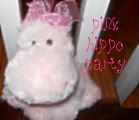Star Rating 3/5
The Candy Shop War
By Brandon Mull
It’s hard enough to resist a good piece of candy, but how could anyone resist a piece of candy that also gave the consumer the ability to run tirelessly for miles or jump from rooftop to rooftop? What about a piece of candy that allowed you to find out what your pet really thought of you? Nate, Summer, Trevor, and Pigeon of Brandon Mull’s The Candy Shop War get to experience all these magical feats and more when candy-making magicians come to their town.
On their way home from school, the four friends decide to stop at the new candy shop that opened up. The Sweet Tooth Ice Cream and Candy Shoppe’s owner, Mrs. White, offers them penny candy and the opportunity to work for some more expensive treats. After a few days of labor, she hints that she has special candy that she doesn’t let the average customer have. The kids can’t restrain their curiosity or appetites and begin doing at first odd and then morally questionable tasks to get her magic candy rewards. Before long the kids are entirely entangled in Mrs. White’s scheme to find the town’s hidden treasure, and, unfortunately, they’ve also realized that Mrs. White is not as kind-hearted as she seemed. Now they have to figure a way out of the mess their insatiable curiosity got them into and retrieve the treasure before she does.
The Candy Shop War puts an imaginative spin on magic use, but lacks depth.
While the kids lack personality and believability, the main adults—Mrs. White, Mr. Stott, and John Dart—are intriguing and mysterious.
Unfortunately, the well-written secondary characters and creative story can hardly make up for the cardboard cut-out primary characters. However, perhaps these plain characters are better suited for children—the intended audience. Most any child could identify him- or herself with one of the four heroes. By connecting with a character, the child might then better enjoy the story, which is fast-paced and exciting. The Candy Shop War is a fun, one-time read that merely makes you wonder what candy you would like to try rather than whetting your appetite for more.










